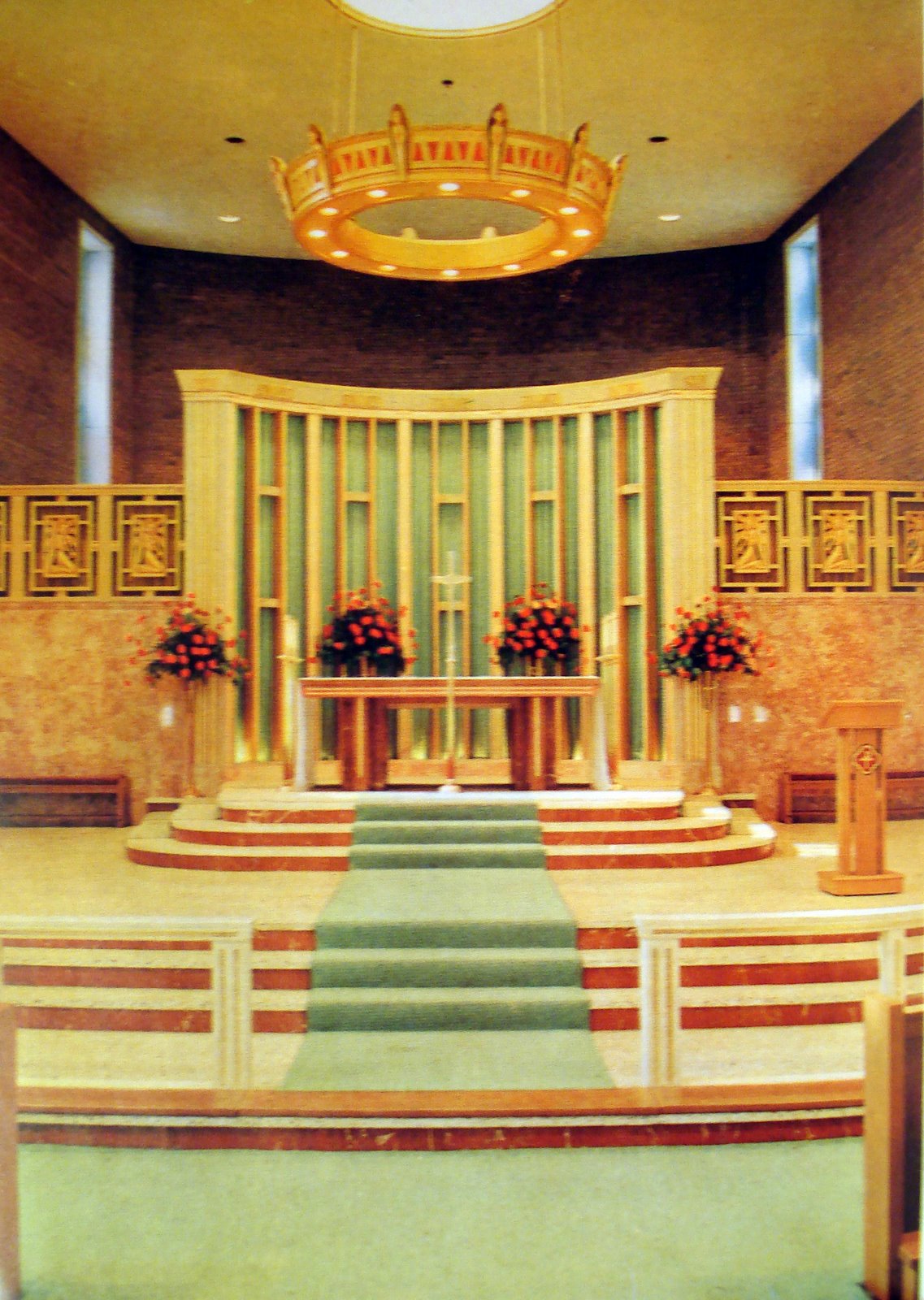
 I visited home for Thanksgiving and ran across the copyright 1974 children’s hand missal I was given when I received my first Holy Communion in 1976. I hadn’t seen it in years, and after all the talk about the “Benedictine” altar arrangements, I saw the missal’s photos in a new light. Here’s something of an “in between” stage in the development of altar arrangements. Tall floor candlesticks stand on the sides of the altar. The altar cross, supported by a stand on the floor, remains in front facing the priest-celebrant. The one extra candle on the altar in front of the cross is a bit perplexing. The only thing I can think of is that it is the seventh candle intended for pontifical masses. Any ideas out there?
I visited home for Thanksgiving and ran across the copyright 1974 children’s hand missal I was given when I received my first Holy Communion in 1976. I hadn’t seen it in years, and after all the talk about the “Benedictine” altar arrangements, I saw the missal’s photos in a new light. Here’s something of an “in between” stage in the development of altar arrangements. Tall floor candlesticks stand on the sides of the altar. The altar cross, supported by a stand on the floor, remains in front facing the priest-celebrant. The one extra candle on the altar in front of the cross is a bit perplexing. The only thing I can think of is that it is the seventh candle intended for pontifical masses. Any ideas out there?
 Interesting to note also is that this is a pretty nice church, despite its obvious Modernist simplicity. The hanging crown-shaped tester over the altar is custom-designed with carved angels all around it. The round skylight above shines right through the tester, suggesting an opening from the heavenly realm derived from the baroque. Even the little can lights in the ceiling are arranged in a circular pattern around the tester. There is a natural focus on the altar rather than the congregation, and the screen behind has low relief carved plaques with images of angels in adoration.
Interesting to note also is that this is a pretty nice church, despite its obvious Modernist simplicity. The hanging crown-shaped tester over the altar is custom-designed with carved angels all around it. The round skylight above shines right through the tester, suggesting an opening from the heavenly realm derived from the baroque. Even the little can lights in the ceiling are arranged in a circular pattern around the tester. There is a natural focus on the altar rather than the congregation, and the screen behind has low relief carved plaques with images of angels in adoration. 

Leave a Reply